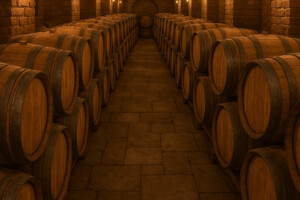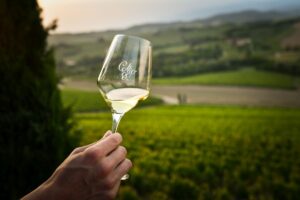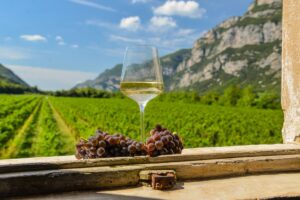“Resistant vines” are increasingly at the center of attention and debates in the wine world, and can be used in designation of origin wines in Europe. This news marks a turning point, even though - contrary to what it seems to suggest - the time frame is not just around the corner, at least not in Italy. First of all, each Country must transfer the transposition of the amendments to the European Regulation and then, the Regions must also authorize the resistant vines - in Italy, very few have given authorization - and, once this step has been satisfactorily concluded, they must be included in the production regulations of the denominations and the procedures that the changes entail. Up until now, only vines of the Vitis Vinifera (European vine) species could be used for Designation wines produced in the European Union, and so vines that have traces of other species in their genome, like disease-resistant vines, were therefore excluded, such as fungal (downy mildew and powdery mildew), or the result of crossings with Asian or American vines (Vitis amurensis and more). The modification of the Regulation (EU) 2021/2117, published in the Official Journal of the European Union on December 6th has cleared these crossbreedings that have been attracting a lot of attention lately, in the perspective of viticulture having less impact on the environment, thanks to reducing the use of pesticides.
“Now the ball is in the hands of the Regions and Consortiums”, Attilio Scienza, luminary of the sector, professor of viticulture at the University of Milan and president of the National Wine Committee explained to WineNews, “to date only a small number of Regions have authorized their cultivation, but others are starting to move as well. The next step is to “promote” them from “authorized” to “recommended” in order to use them in DOC wines to 15% maximum quantity. Then, after three years, the Consortiums will be able to ask to increase this quota with changes to the regulations that should not encounter difficulties in the double passage from the Wines Committee and from Brussels”.
By the way, continued Scienza, the French have preceded us. They considered the “modern” resistant vines as belonging to Vitis Vinifera and entered them in the list of European vine varieties, while in Italy they were included in a special category. And, as a matter of fact, two resistant vines have already been included in the Champagne and Bordeaux disciplinary, respectively.
Regarding registering as a “special category”, Eugenio Sartori, GD of VCR-Vivai Cooperativi Rauscedo, emphasized that “the first action at the Ministerial level must be removing the limitation placed on the margin of resistant vines in the National Variety Register”, which probably is part of the actions required within the National implementation of amendments to the Regulation.
“In Italy”, underlined Scienza, “we have cultural and anthropological ties that must be removed through communication, and it will not be easy considering 200 years of this culture behind us. The first thing to do is to increase the resistance of indigenous vines. Today we have only three, Nosiola and Teroldego, selected by the Mach Foundation, and Tocai, the result of the University of Udine’s work. The Glera vine will arrive in a couple of years and then the impact will be strong. The other resistant vines available refer to International varieties, but we need a Nebbiolo, a Sangiovese, a Nero d’Avola, an Aglianico, etc. The second urgent thing to do is to experiment with resistant vines in numerous and different pedo-climactic environments to understand their performances, which can be very different. For instance, the case of Solaris, one of the “oldest”, which at its altitude in Alto Adige produces definitely much more interesting wines than elsewhere. We need a national project to test the 50-60 resistant vines available in the field and in the winery to be able to understand where they are best. We could begin to use the resistant vines at 100% to produce TGI wines that do not bear the name of the vine, but the territory, as they did in Alto Adige for Bronner. TGI wines, on the other hand”, continued Scienza, “have always been a testing ground of the vines for DOC. And then, it is fundamental that communication enhances the great environmental sustainability of the wines obtained from the resistant varieties, which furthermore also have greater resilience than the Vitis Vinifera. The real meaning of “autochthonous” should also be clarified, as it refers to the place where a vine expresses its best and not to its origin. So, for example, in the case of Sangiovese, I am thinking of Tuscany and not of the autochthonous nature of the origins of Calabria, Sicily and Campania”.
“Currently, resistant vines have been authorized in Friuli Venezia Giulia, Veneto, Trentino Alto Adige, Emilia Romagna, Marche and Abruzzi”, explained Sartori, “and facilitating authorization could come from a change in the modus operandi. Unlike the provisions of the State-Regions agreement, we could use references to tests in non-regional experimental fields, but instead for the macro-areas of the North, Center, South and Islands”; that is to say, 4 experimental vineyards and not 20.
The Regions’ time frames could be shorter, “if we proceed”, suggested Professor Scienza, “like in the game of dominoes, using the “principle of proximity”, allowing registration in the regional or provincial Register if the vine has already been authorized in a neighboring region”. The real critical point, the bottleneck, is the lack of “indigenous resistant vines” to support the denomination wines. The critical point also supports the resistance some Regions offer to authorize cultivating resistant vines.
To date, it is neither easy nor quick to obtain resistant indigenous vines. However, “if authorizations to cultivate existing resistant varieties are sent”, Scienza assumed, “I believe that research will accelerate and could become a real revolution. There are several projects, which aim to obtain resistant indigenous vines; for example, Sicily is moving in this direction. Unfortunately, there are some difficulties with genome editing, in the case of grapevines. The experimental phase is behind the goal and this shifts the time horizon by 10-15 years to obtain vines that are completely similar to their parents, if not better, from the point of view of resistance. Therefore, in this phase it will be necessary to continue to work with recurrent crossbreeding and assisted selection. And there is no time to waste”.
Copyright © 2000/2025
Contatti: info@winenews.it
Seguici anche su Twitter: @WineNewsIt
Seguici anche su Facebook: @winenewsit
Questo articolo è tratto dall'archivio di WineNews - Tutti i diritti riservati - Copyright © 2000/2025








































































































































































































